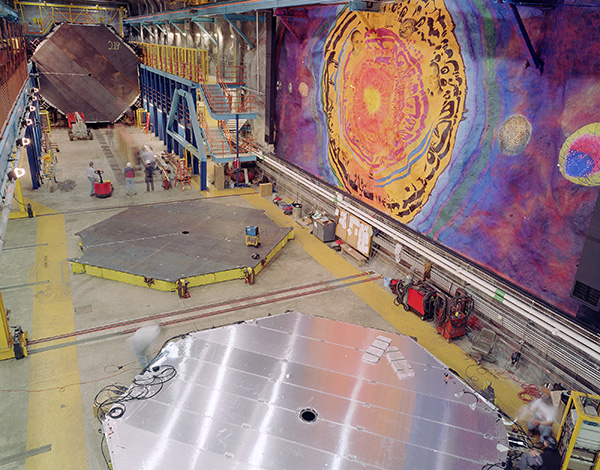Researchers searching for a hypothetical fourth type of neutrino have found no evidence for the particle, according to a new study. Very low-mass and highly abundant, neutrinos are elementary particles that barely interact with the rest of matter. In addition to the neutrino's three documented types, or flavors—known as electron, muon, and tau—a fourth flavor is allowed by various theories of particle physics. Sterile neutrinos are highly sought-after by scientists because the particles could help explain the fundamental mystery about neutrinos having mass in the first place, which goes against the predictions of the otherwise well-supported standard model of particle physics. In addition, sterile neutrinos could help account for matter's puzzling dominance over antimatter in our universe, while also serving as a plausible candidate for dark matter, a mysterious substance that theoretically outnumbers normal matter at least five to one. See also: Antimatter; Dark matter; Elementary particle; Fundamental interactions; Mass; Matter; Neutrino; Standard model

Previous experiments have hinted at the existence of sterile neutrinos by finding that the expected ratio of the three known neutrino flavors registered at detectors does not always hold. Those results have suggested that neutrinos can oscillate, or change flavors, beyond the known three and into a fourth flavor. Researchers looked for this signature in years’ worth of data collected by the MINOS+ (Main Injector Neutrino Oscillation Search) and Daya Bay experiment collaborations, based at Fermilab in the United States and in China, respectively. In the MINOS+ experiments, a particle accelerator based at Fermilab in Illinois sent a beam of neutrinos about 734 kilometers (456 miles) underground to detectors in Minnesota. (Because neutrinos interact so weakly with matter, the beamed particles can pass easily through rock and soil.) The neutrinos in the Daya Bay experiments were generated in six nuclear reactors, which were monitored by eight detectors for emitted neutrinos. See also: Nuclear reactor; Particle accelerator
Overall, neither MINOS+ nor Daya Bay showed any neutrino flavor discrepancies that would allow for a fourth neutrino type. While the results cast doubt on the previous experiments' conclusions, there remains no widely accepted explanation for the conflicting data. If experimental errors are eventually shown to be behind the possible false-positive results, though, then it is possible that sterile neutrinos do still indeed exist, but only at the experimentally unreproducible extreme energies that occurred during the big bang when the universe began 13.8 billion years ago. See also: Big bang theory; Energy; Universe





